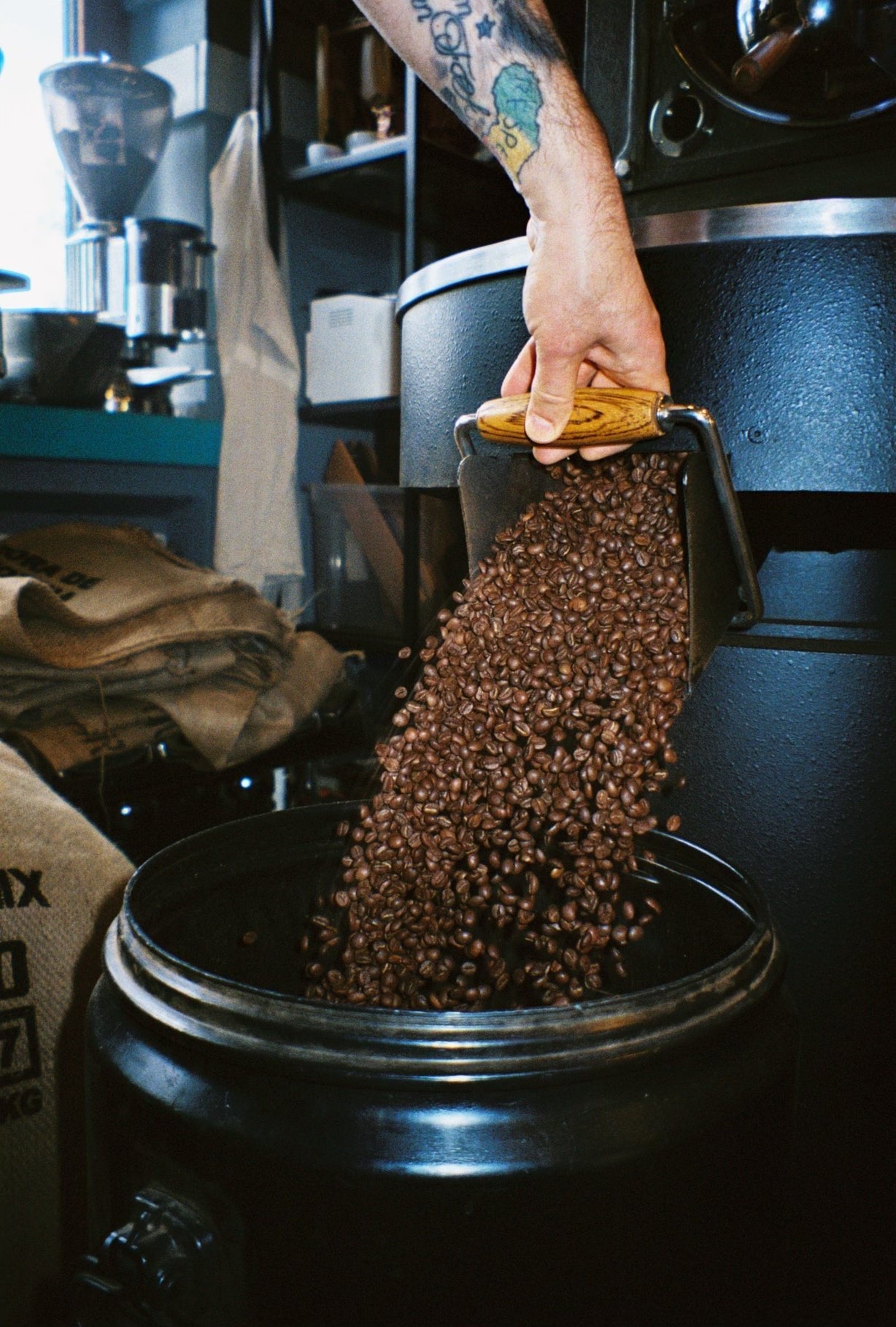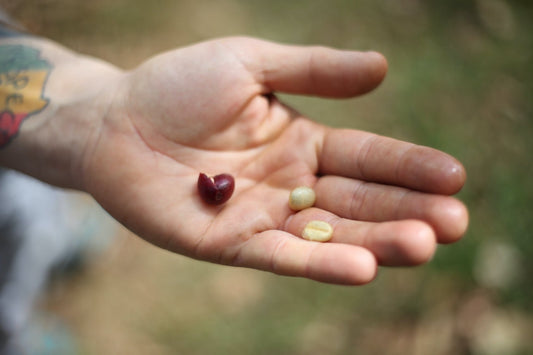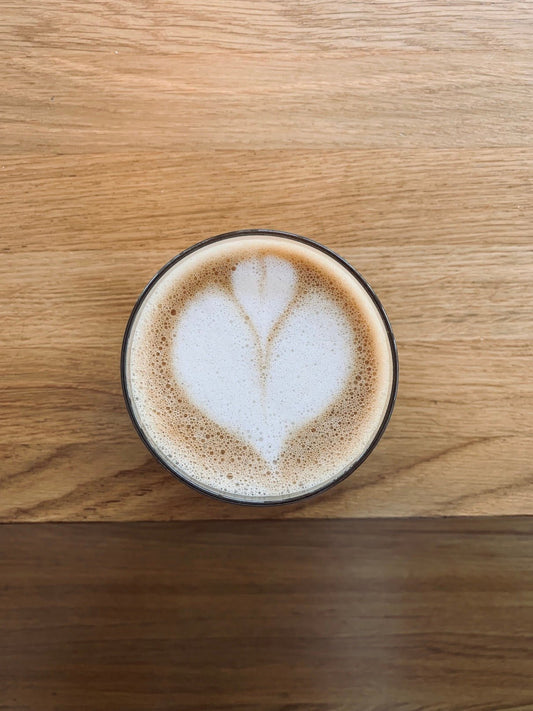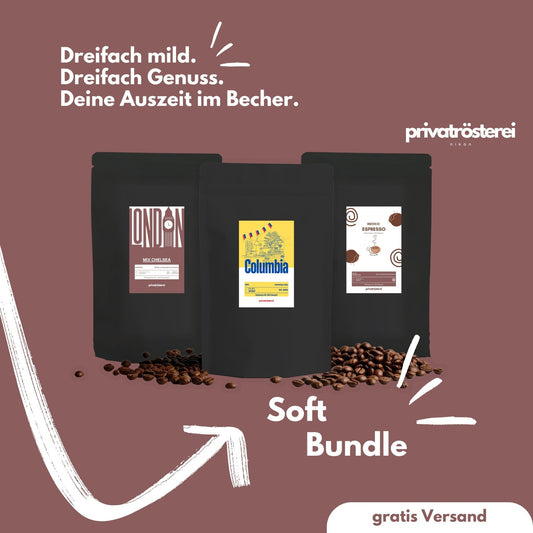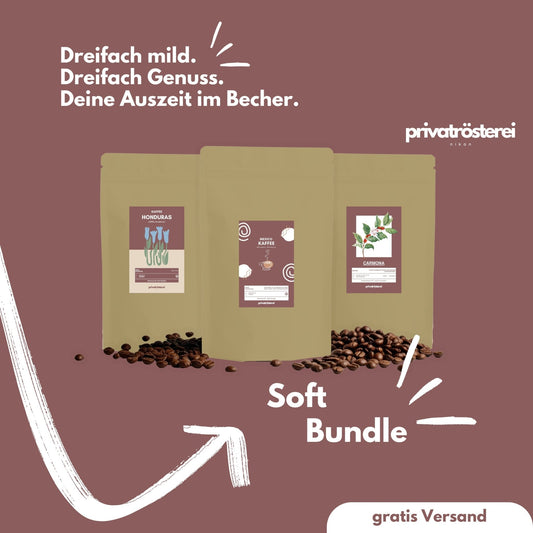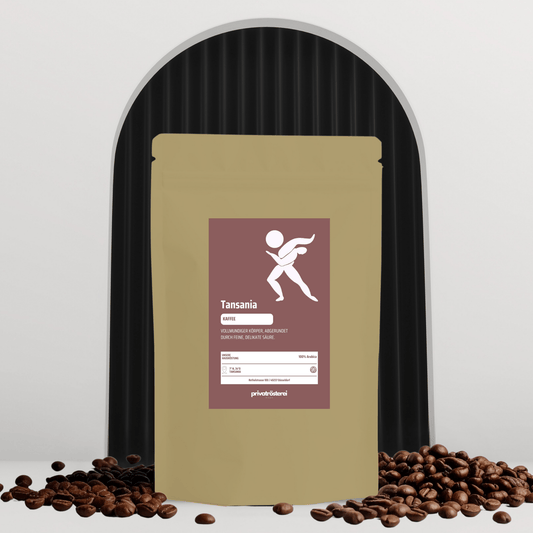Hot , black, bitter, coffee. That's how it tastes in many places, and travels directly from the cup to the throat in the morning, thirsting for alertness and arousal. But it doesn't have to be hot, black, and bitter, and coffee's journey is far longer than the one it usually takes from coffee pot to mouth.
In the following sections, we'll take you on a journey from Africa to Asia and on to Brazil. We'll show you that tastes differ. And we'll reveal what excitable goats and an African village called Kaffa have to do with coffee.
Because you shouldn't get ahead of yourself with the end of a good story, let's start where the legends surrounding coffee originate.
The traces lead to Ethiopia
If legend is to be believed, a shepherd named Kaldi discovered the coffee plant on his journey through Ethiopia. While resting in a place where branches, bushes, and tall grasses provided some shade and protection from wild animals, Kaldi's goats satisfied their hunger with a tempting plant whose cherries glowed red in the desert sun. A short time later, they were jumping around excitedly. Thus, it was found: the coffee plant.
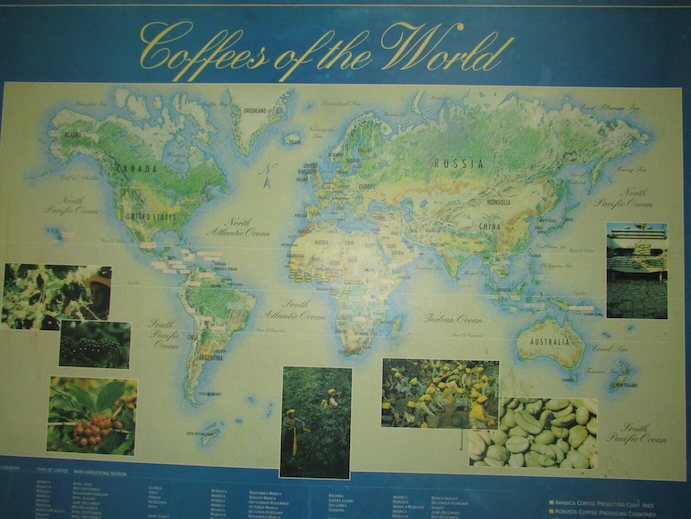
According to written records, around 900 AD, the red cherries of the coffee plant were not consumed neat in southwest Ethiopia, but rather consumed as a hot beverage. The preparation is similar to that of tea, with the dried leaves and cherries of the coffee plant being poured over with hot water and then drunk. The place where this preparation was first mentioned in writing is called Kaffa. This is precisely where the coffee we know today is named.
From there, coffee conquered Arab cultures, the Ottoman Empire, and reached Istanbul via explorers and conquerors. During its journey, coffee preparation increasingly resembled the way it is prepared today: beans are roasted, finely ground, and boiled repeatedly with water.
Unlike today, where coffee has long since become a popular all-day beverage for everyone, coffee was once reserved only for those of a wealthy class. The first coffeehouses opened in Istanbul in the 16th century. However, under the ruler Murad IV, coffee consumption evolved from a privilege to a threat. Because he was uneasy about the effects of coffee, he immediately banned its consumption and demolished coffeehouses. Anyone who defied this ban was persecuted and punished.
He paid less attention to the travelers who explored the Middle East and took a liking to the roasted beans. They became a souvenir of the 17th century and enjoyed great popularity, especially among Europeans. The beans took root in Venice, London, Vienna, and Paris, where the first European coffeehouses emerged. They first reached German soil in 1673 with their arrival in Bremen. The first German coffeehouse opened there, followed by Berlin in 1721.
Coffee as a new commodity
As coffee consumption became increasingly popular, a trade network developed around the red cherries and roasted beans. For a long time, they were traded like grain, cheaply and in bulk, to make them accessible to as many people as possible.
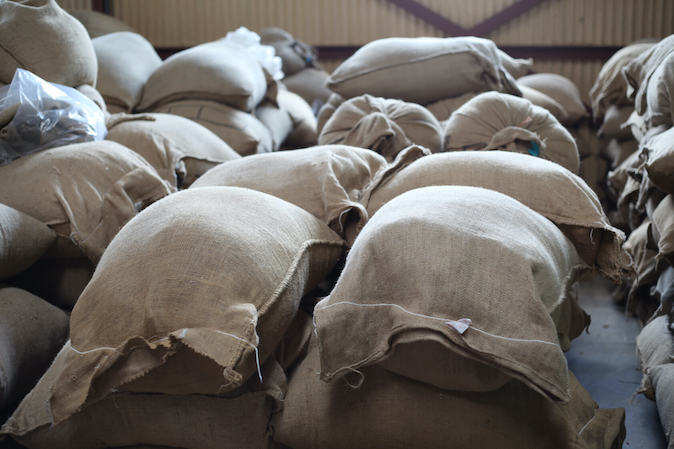
Photo: Coffee sacks filled with green coffee
The upper classes could afford to enjoy coffee in the new coffeehouses, so the coffee trade transformed from a mass market into a more exclusive market for the coffeehouses. The coffee had to be of higher quality and carefully harvested and prepared. Today, the focus of trade is less on the people who purchase the coffee or the coffeehouses themselves, but rather on the countries of origin of the coffee plant. Therefore, the coffee trade is also referred to as three waves in which it developed.
The producing countries: Where our coffee comes from
As mentioned at the beginning, the roots of our coffee date back to Ethiopia, where, according to legend, shepherd Kaldi first discovered the coffee plant. But Ethiopia is by no means the only country where this valuable commodity grows and its red cherries thrive. The popular fruit prefers to grow at high altitudes with (sub-)tropical climates. At the equator, rainfall, temperature, sunlight intensity, and soil composition create particularly suitable climatic conditions for the coffee plant to grow. Particularly favorable conditions for the coffee plant can be found in places like Ethiopia, Colombia, Indonesia, and Brazil.
Depending on the climate, four types of coffee are distinguished: Arabica, Robusta, Liberica, and Excelsa, although the latter two are only grown in small quantities. Together, Arabica and Robusta beans account for 98 percent of coffee. Arabica coffee is primarily found in countries such as East Africa, India, Papua New Guinea, and Latin America. Robusta beans are harvested in West Africa, Uganda, Indonesia, but also in Vietnam, Brazil, and India. Countries such as India are among the few where climatic conditions are suitable for both types of coffee.
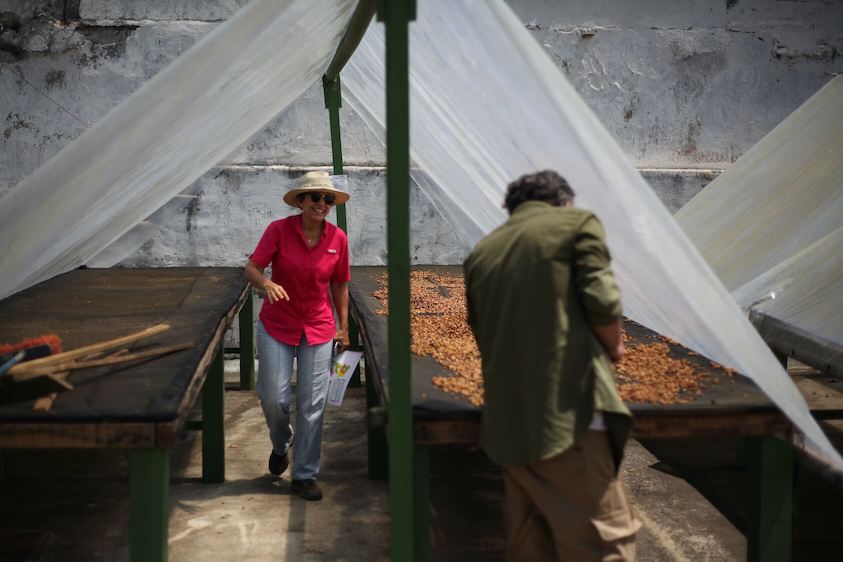
Photo: Coffee is dried
If you trace the coffee-producing countries on the map with a pencil, you'll notice that a veritable coffee belt has developed between the 30th and 30th parallels of the equator. It marks the most important coffee-producing countries, from which green coffee is exported all over the world. Brazil harvests and exports the largest quantities of coffee, closely followed by Vietnam, Indonesia, and Colombia.
For most coffee-producing countries, coffee cultivation is one of the most important sources of livelihood: More than 20 million families, mostly in developing countries, depend on the income from coffee cultivation. Coffee is therefore the second most valuable commodity exported from developing countries. It is often even their only export, as is the case in East Timor, for example. This makes it all the more important to advocate for fair wages for the people who grow and harvest coffee in these very countries.
Different countries, different customs – tastes differ
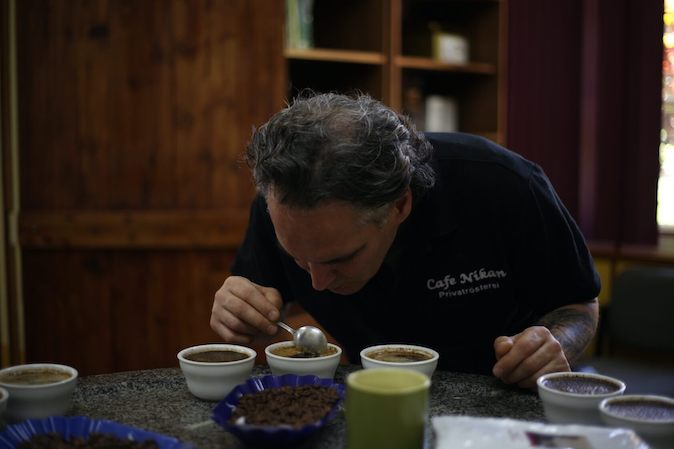
Photo: The beans are tasted during cupping
The spread of coffee has given rise to distinct coffee cultures, each associated with a variety of preparation methods. These are most pronounced in Europe, the United States, and Japan. The latter now imports more coffee than Italy or France. But how do you actually drink coffee? Tastes differ, that much is clear. We've embarked on a brewed journey through the enjoyment of coffee:
- In Germany, we prefer to drink our coffee black, perhaps with a little milk and sugar. The majority of Germans generally prepare their coffee using a filter coffee machine.
- The French do things differently. The trend here is coffee mixed with milk and served in a cup – café au lait. And, of course, let's not forget the French press. The French press goes back to a process invented in France in the mid-19th century: Coarsely ground coffee is poured over hot water in a French press, and after a while, the coffee is pressed into the grounds.
- Milk also plays a role in Italy . It refines the espresso according to personal taste. Espresso is made by forcing hot water through finely ground coffee beans at very high pressure. This creates a foamy layer on top of the espresso, which Italians also call crema. Depending on the amount of milk added to the espresso, the final result is either a cappuccino or a latte macchiato.
- Alcohol can also be part of the coffee experience. At least in Scandinavia , this is the case. Here, coffee among friends is sometimes served with a shot of vodka or clear liquor for a high-proof pick-me-up.
- Non-alcoholic, but still a wine of Islam, it is consumed in the Arab world, specifically in Turkey . Ibrik is the name given to the drink, which is prepared in a small pot made of sugar and very fine mocha powder. Unlike the French press, the coffee grounds are poured into the cups. True connoisseurs therefore never finish their ibrik completely.
- In Vietnam , coffee is guaranteed to be drunk all the way through. Here, the coffee is served with ice and sweet condensed milk. However, the coffee experience is anything but brief, as traditionally, the coffee is first filtered at the table: Finely ground coffee is poured over hot water, passed through a metal sieve, and mixed with sweet, thick milk in the bowl or glass below. Ice is then added for a refined finish.
- A great deal of time is devoted to enjoying coffee in Ethiopia , one of the coffee-producing countries. Here, the coffee beans are first roasted communally, then ground into a fine powder, and then brewed several times with water over an open fire. Served in small cups, the coffee is drunk until it is empty. During the ceremony, the participants discuss the enjoyment, their daily lives, and their problems, and receive a blessing at the end.
- In America , however, people take less time for a coffee. Here, coffee comes in a cup: the to-go coffee. This includes all kinds of coffee, often with a sweeter touch. For example, the iced coffee, a mixed drink made with coffee, milk, sugar, and ice cubes, or the caramel latte, which consists of coffee, milk foam, and a generous dash of caramel sauce.
